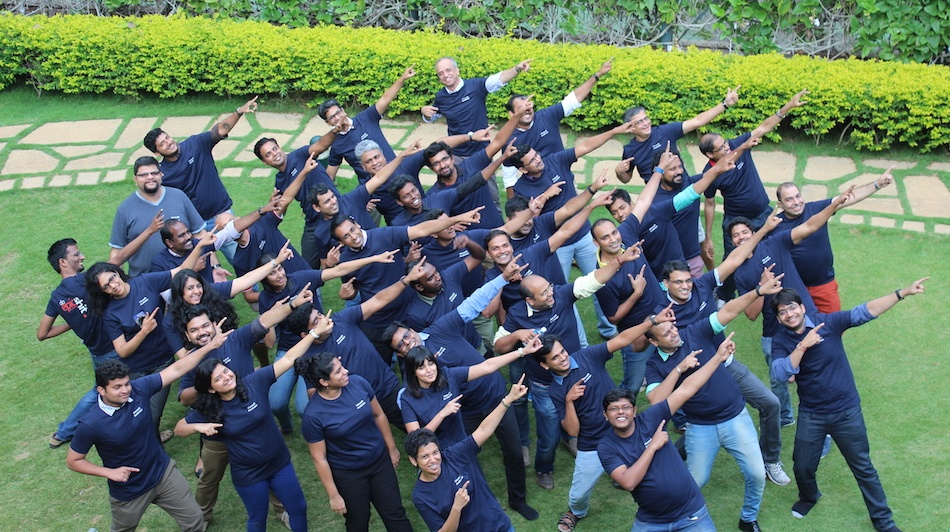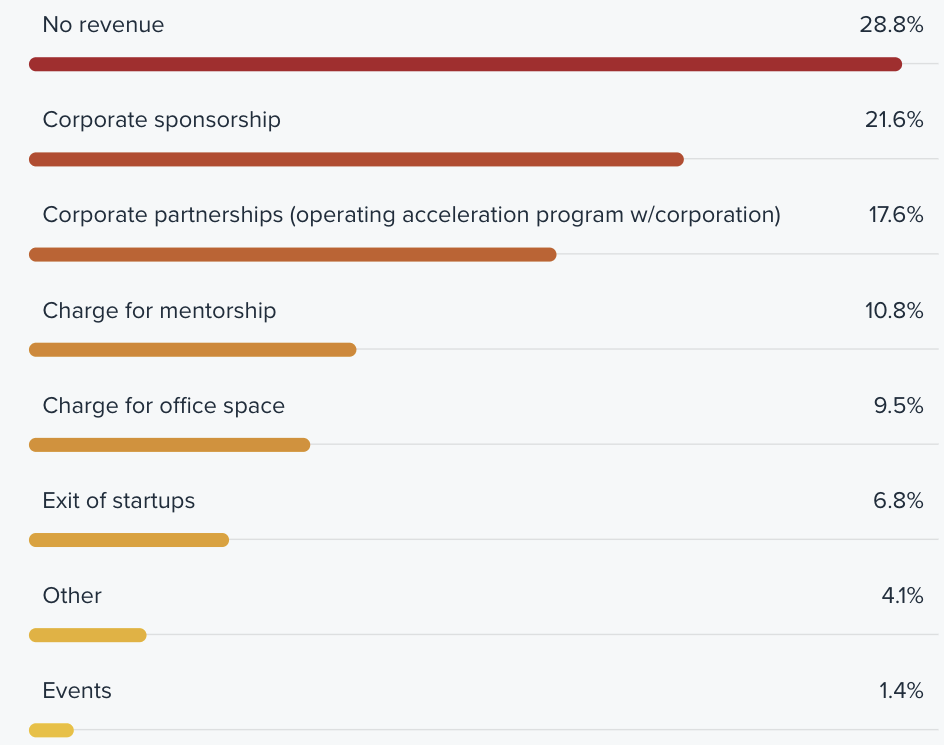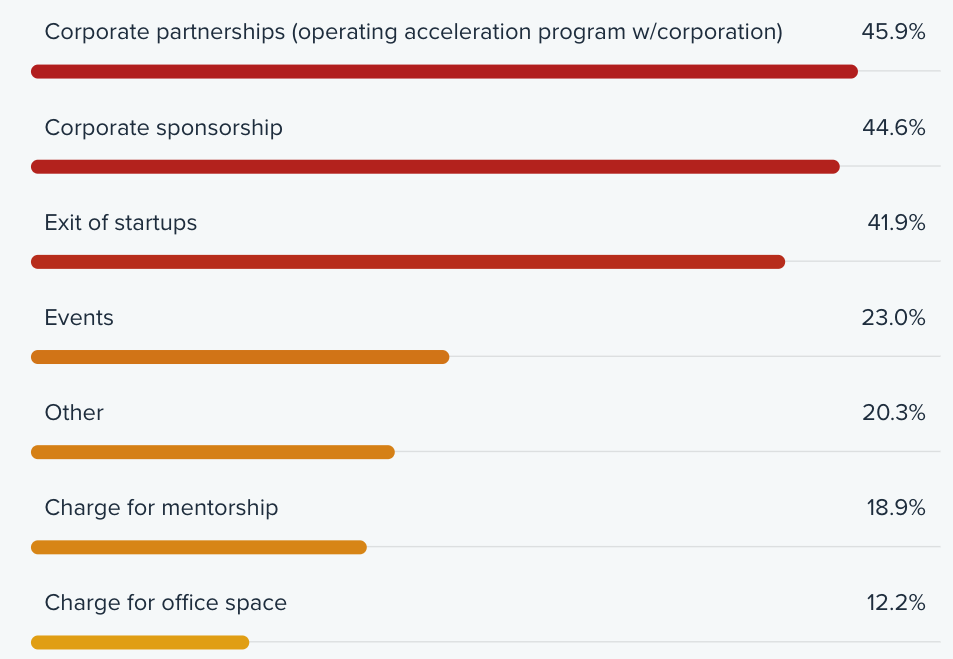
A batch of 13 startups and their mentors at Microsoft Accelerator in Bangalore. Photo credit: Microsoft Accelerator.
Accelerators are shifting their business models as they find it hard to sustain operations out of revenue from the equity startups give them. This is the key finding in a new report based on a survey of 579 accelerator programs that invested US$207 million into 11,305 startups in 2016. Out of this, about US$18 million went into 1,368 startups from 76 accelerator programs in the Asia Pacific region, according to an annual Gust report released today.
Only 7 percent of APAC accelerators reported revenue from exits as their main source of revenue in 2016.
In 2015, nearly two-thirds of the accelerators surveyed (63 percent) were following the traditional cash-for-equity model. This involves investing a small amount of seed money – US$25,000 on average – in exchange for equity, usually between five percent and ten percent.
Last year, the share of accelerators relying on returns from equity investments became less than half – 42 percent. The reason is that exits are too few and taking too long to fund the operations of accelerators. Only 7 percent of APAC accelerators reported revenue from exits as their main source of revenue in 2016 – 14 exits were reported by 11 accelerators.
Sources of revenue for accelerators in 2016

Source: Gust Report on Accelerators 2016.
This is in line with a global trend, with only 179 exits reported from the 579 accelerators surveyed. In 2015, a majority of them had a cash-for-equity model, but last year only one-third of them said they would rely on revenue from exits in the future.
Sources of revenue aimed for by accelerators

Source: Gust Report on Accelerators 2016.
Accelerators have been exploring new channels for monetization. These include charging for mentorship, subletting office space, hosting events, and working with corporations.
The corporate connection has grown significantly. More than half of the accelerators worldwide are at least partially funded by corporations, and over two-thirds of them are aiming to generate revenue from services sold to corporations. The corresponding numbers for APAC are marginally lower, but follow the same trend.
See: Techstars launches first center in Asia. Founders explain what’s special about it.
The corporate revenue for APAC accelerators in 2016 came mainly in two forms: 46 percent of it from white-labeled or jointly-run accelerator programs created on behalf of corporations, and 45 percent from sponsorship packages sold by accelerators.
The trend is getting a push from growing corporate interest in startups as well as a maturing of the accelerator industry. “On the one hand, this is because corporations are discovering that accelerators are an efficient and effective way to engage with startups. On the other hand, accelerators understand that corporations can help them fund operations in the short-to-medium term (since exits are often far out),” says Miklos Grof, co-author of the Gust report. “They improve the prospects of their portfolio companies that can potentially sell to, raise funds from, or be acquired by these corporations.”
See: PayPal is investing in these 5 fintech startups
A little over one-third of the 76 APAC accelerators surveyed in 2016 took no equity from their startups, underlining the shift to a corporate revenue model and a rise in accelerator programs run by corporations.
Equity taken by accelerators

Source: Gust Report on Accelerators 2016.
This post Accelerators scramble for new revenue streams as equity model fails appeared first on Tech in Asia.
from Tech in Asia https://www.techinasia.com/accelerators-scramble-revenue-streams-equity-model-fails
via IFTTT
No comments:
Post a Comment